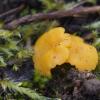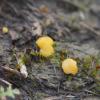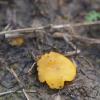
15-12-2025 07:09
 Danny Newman
Danny Newman
indet. Rutstroemiaceae sp. on unk. fallen leavesMc

18-12-2025 21:17
Pol DebaenstThe identification took me to Byssonectria deformi

19-12-2025 10:10
Patrice TANCHAUDBonjour, récolte réalisée en milieu dunaire, a

18-12-2025 17:23
 Bruno Coué
Bruno Coué
Bonjour,je serais heureux d'avoir votre avis sur c

18-12-2025 18:07
Margot en Geert VullingsThese plumes were found on rotten wood.They strong

17-12-2025 18:35
 Michel Hairaud
Michel Hairaud
Bonjour à tous/Hi to everyone I am passing along

15-12-2025 15:48
 Danny Newman
Danny Newman
Melanospora cf. lagenaria on old, rotting, fallen

15-12-2025 15:54
 Johan Boonefaes
Johan Boonefaes
Unknown anamorph found on the ground in coastal sa

15-12-2025 21:11
 Hardware Tony
Hardware Tony
Small clavate hairs, negative croziers and IKI bb
 Hi all,
Hi all,Today I found this asco on the ground in a field.
I think this specimen as Phaeohelotium terrestre based on the habitat.
There is no description in my books.
Where can I found some info about this specimen (spores, etc..)?
Spores 12-15 x 3-4 micron, paraphyses quite slender.
Thanks, look forward to your help.
Edit

Ph. terrestre has much wider spores and is confined by mycorrhiza cto Myrtaceae such as Eucalyptus, and Nothofagus.
Yours could have grown on organic particles in the soil. It reminds me of Ph. monticola. Did you test IKI reaction? The contents of the living paraphyses would be helpful too.
Zotto

Seeking Tomorrow living material and observing the contents of the living paraphyses.
Thank you for your attention and suggestions.
Good night.
Edit

Ph. terrestre (Velen.) Svrcek is a possible synonym of H. epiphyllus or perhaps Ph. monticola, in my opinion.

Nothing happened.
At least I heard the news of the Ph. baileyanum. :-)
Today I was in search of new asco, but I could not find. (The rain has rearranged the habitat.)
I have noticed that there is an oak tree five meters from the asco habitat. I think they could have grown on organic particles of oak.
Thanks for the information about synonyms.
Friendly greetings,
Edit






